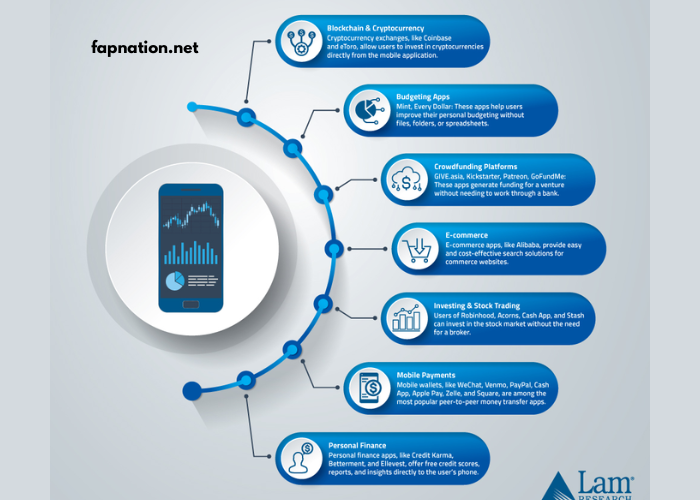Managing personal finances effectively is essential for long-term stability, security, and achieving financial goals. Whether you are planning for retirement, saving for a major life event, or simply aiming to reduce stress about money, mastering the art of personal finance is crucial. In this article, we will explore practical strategies for managing personal finances, creating budgets, investing wisely, and setting long-term financial goals. By following these steps, you can ensure financial health for both today and in the future.
The Importance of Financial Planning for the Future
Before diving into the methods of managing personal finances, it’s important to understand why financial planning is necessary. In today’s fast-paced world, many people struggle with financial instability. From living paycheck to paycheck to dealing with unexpected expenses, poor financial management can lead to stress, debt, and missed opportunities for growth.
Financial planning enables you to:
- Prepare for unexpected events: Emergencies, such as medical issues or job loss, can happen at any time. Proper planning allows you to have a safety net.
- Achieve long-term goals: Whether it’s buying a home, sending your kids to college, or retiring comfortably, effective financial planning makes achieving your dreams possible.
- Create a sense of security: With a solid financial plan, you can build a cushion that gives you peace of mind about your future.
Step 1: Understanding Your Current Financial Situation
The first step in managing personal finances effectively is understanding where you currently stand financially. This process is all about evaluating your income, expenses, assets, and liabilities. Knowing where you stand is the foundation for any good financial strategy.
1.1 Track Your Income and Expenses
Start by calculating your total monthly income. This includes your salary, business income, investment income, and any other sources of revenue. Once you know your income, begin tracking your monthly expenses. This can be done manually or through budgeting software like Mint or YNAB (You Need A Budget). Categorize your expenses into:
- Fixed expenses (rent, mortgage, utilities)
- Variable expenses (food, entertainment, shopping)
- Savings and investments (emergency fund, retirement)
1.2 Create a Balance Sheet
Next, list your assets and liabilities. Assets include things like your house, savings, and investments, while liabilities include debts such as loans, credit card balances, or mortgages. Subtract liabilities from assets to get your net worth. This step gives you an accurate snapshot of your financial health.
Step 2: Creating a Realistic Budget
Once you understand your financial situation, the next step is to create a budget. A budget serves as a roadmap for managing your finances, allowing you to allocate your income toward specific financial goals while ensuring you don’t spend beyond your means.
2.1 The 50/30/20 Rule
One of the simplest budgeting techniques is the 50/30/20 rule:
- 50% for necessities: This includes rent or mortgage, utilities, groceries, and transportation.
- 30% for discretionary spending: This covers things like entertainment, dining out, and non-essential shopping.
- 20% for savings and debt repayment: Prioritize building your emergency fund, contributing to retirement accounts, and paying off high-interest debt.
This rule is an easy way to balance your spending and savings without overwhelming yourself with complex budgeting systems.
2.2 Plan for Irregular Expenses
In addition to regular monthly expenses, account for irregular expenses such as car repairs, medical bills, or vacations. Set aside a portion of your income each month for these costs so that you are not caught off guard when they arise.
2.3 Adjust Your Budget Over Time
Your budget should be flexible. As your income grows or your spending habits change, you may need to adjust your budget. Keep track of your expenses regularly to ensure you are staying within your limits and on track with your financial goals.
Step 3: Building an Emergency Fund
An emergency fund is one of the most important aspects of managing personal finances effectively. It acts as a financial cushion in case of unexpected events, such as a job loss or medical emergency. Without an emergency fund, you may have to rely on credit cards or loans to cover these expenses, which can lead to debt.
3.1 How Much Should You Save?
A general rule of thumb is to save three to six months’ worth of living expenses. However, this amount may vary based on your personal circumstances. For example, if you have a stable job and minimal dependents, you may be comfortable with three months of expenses. If your income is irregular or you have dependents, six months of expenses may be more appropriate.
3.2 Where Should You Keep Your Emergency Fund?
Your emergency fund should be kept in a liquid account, such as a high-yield savings account, where you can access the funds quickly without penalties. Avoid investing this money in stocks or long-term assets, as you may need to use it in an emergency and don’t want the value to fluctuate.
Step 4: Managing Debt Wisely
Debt is a common issue that can hinder financial progress. Whether it’s student loans, credit card balances, or mortgages, managing debt is key to ensuring that your finances remain healthy.
4.1 Pay Off High-Interest Debt First
If you have multiple debts, prioritize paying off high-interest debts, such as credit card balances, before tackling lower-interest debts like student loans or mortgages. The high interest on credit cards can accumulate quickly, making it harder to pay down the principal.
Consider using the debt avalanche method, where you pay off the debt with the highest interest rate first while making minimum payments on other debts. Once the high-interest debt is paid off, move on to the next one, and so on.
4.2 Consider Debt Consolidation
If you have multiple debts with varying interest rates, you might want to consider debt consolidation. This involves combining your debts into a single loan with a lower interest rate, making it easier to manage and potentially saving you money in interest payments.
4.3 Avoid Accumulating More Debt
Be mindful of taking on additional debt, especially for non-essential purchases. Focus on living within your means and avoid using credit for everyday expenses unless absolutely necessary.
Step 5: Saving and Investing for the Future
Saving and investing are essential for long-term financial security. While saving is important for short-term goals like building an emergency fund, investing helps you grow your wealth over time and prepare for retirement.
5.1 Start Saving Early for Retirement
One of the best ways to secure your future is by saving for retirement. The earlier you start, the more time your money has to grow through compound interest. Take advantage of employer-sponsored retirement plans like 401(k)s, and if possible, contribute enough to receive any company match. Additionally, consider opening an IRA (Individual Retirement Account) to supplement your retirement savings.
5.2 Diversify Your Investments
Investing is a key strategy for building wealth, but it’s important to diversify your portfolio. A diversified portfolio includes a mix of different asset classes, such as stocks, bonds, and real estate, which can help reduce risk. Don’t put all your money into one investment or sector.
5.3 Consider Professional Help
If you’re new to investing or find it overwhelming, consider seeking advice from a financial advisor. They can help you create a personalized investment strategy based on your financial goals and risk tolerance.
Step 6: Regularly Review and Adjust Your Financial Plan
Personal finances are not static, and your goals and circumstances will change over time. To ensure your financial plan remains effective, review it regularly and make adjustments as needed.
6.1 Reevaluate Your Goals
Periodically revisit your financial goals to determine if they are still relevant. As you achieve certain milestones, such as paying off debt or purchasing a home, new goals will arise. Adjust your plan to align with your current priorities and financial situation.
6.2 Monitor Your Progress
Track your financial progress over time to ensure that you are on the right path. Use financial tools and apps to monitor your spending, savings, and investments. Regularly assess your net worth and update your budget to reflect any changes in income or expenses.
6.3 Stay Disciplined
Consistency is key to managing personal finances effectively. Stay disciplined with your budget, savings, and investments, even when it may seem difficult. Financial success is a long-term journey, and small, consistent efforts can have a big impact over time.
Conclusion
Managing personal finances effectively for the future requires careful planning, discipline, and regular review. By understanding your current financial situation, creating a realistic budget, building an emergency fund, managing debt, and investing for the future, you can achieve financial security and work toward your long-term goals. Remember, financial success doesn’t happen overnight, but with the right strategies in place, you can pave the way to a brighter financial future.



